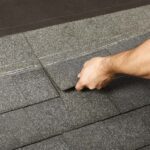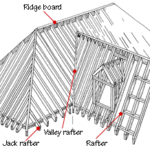Ladders are essential tools for home projects where you need to extend your height or reach. Unfortunately, however, they are also the source of many home accidents and injuries.
The problem with ladders is that many homeowners and do-it-yourselfers are not familiar with important rules and principles that help ensure safe ladder use.
In this article, we’ll help you choose the right ladder for the job and then guide you through proper setup and use.
Choosing the Right Type and Size Ladder
Start by making sure you have the right ladder for the job. You’ll find many types of ladders: stepladders, extension ladders, telescopic ladders, and various multi-position ladders that can be shaped for a variety of tasks.
This variety of ladders exists because of the diverse needs, from repairing a room’s ceiling to climbing onto a roof. In most cases, you can’t use an extension ladder for the ceiling, and you can’t use a stepladder for the roof. And you shouldn’t try. Using an inappropriate ladder or modifying a ladder for unintended purposes is a recipe for disaster.
Instead, buy, borrow, or rent the right ladder (you can rent ladders from home improvement centers or tool rental supplies). Doing so may save you from an ER visit.
Stepladder
A stepladder is best for most indoor jobs such as painting, wallpapering, and general construction. It needs to stand on a flat surface, such as a floor, and it isn’t designed to lean against a surface, such as a wall. It relies completely on its own four legs, so a stable flat surface is essential.
Stepladder heights are 4, 6, 7, 8, 10, 12, 14, and 18 feet. Most stepladders sold to homeowners are 4-, 6-, or 8-foot ladders. See more about how far you can reach from various sizes of ladders below.
Extension Ladder
An extension ladder has two sections that slide apart, so the extended ladder is almost twice as long as the ladder in its protracted state (less the sections that must overlap for strength). It’s designed to lean against a stable surface such as a wall or roof edge.
This is the ladder you’ll need for reaching heights, especially outdoors.
Telescopic Ladder
Telescopic ladders are relatively new to the market. Made of aluminum, they’re designed with rails that telescope out from a very short package to a tall ladder.
Their biggest pluses are that they are easy to store and transport because, in their contracted state, they’re only about 3 feet tall, and they weigh about 40 pounds.
They’re very popular for incidental indoor use, such as accessing attics or changing light bulbs. They’re also favored for reaching the top or RVs and camper vans because they store in limited space. They also work outdoors for cleaning out low-level gutters and similar tasks. Most common sizes are not long enough to allow safely climbing onto the roof.
See more below about issues and concerns of telescopic ladders.
Multi-Position Ladder
Multi-position ladders can be very useful because of the various positions they can assume. For starters, they fold flat for easy storage.
Additionally, they can be set up:
- To serve as an A-frame stepladder;
- As a stairway ladder that has one side of the ladder longer than the other so the ladder can stand level when placed on a stairway;
- As a wall ladder where one side stands flat against a wall and the part you climb leans toward the wall;
- As an extension ladder that stands as a single, tall ladder; or
- As a scaffold that has two outer sections and a plank spanning them. This is meant to be used for holding an 8- to 13-foot plank.
The trickiest part of using a multi-position ladder is figuring out how to make all the various configurations and adjustments.
The multi-position ladder is a good choice for someone who wants a single ladder that will handle lots of different tasks and that can be stored in a relatively tight space. It’s less convenient than a stepladder or extension ladder for someone who just needs to reach something high once in a while.
See more about how to use a multi-position ladder in the video below.
Ladder Materials
Stepladders and extension ladders may be made of wood, aluminum, or fiberglass. Telescopic and multi-position ladders are aluminum.
Several decades ago, wood was by far the most common ladder material. Now, except for permanent retractable attic ladders, wood is seldom used because of its heavy weight.
Strong, lightweight aluminum is the material of choice. However, because aluminum readily conducts electricity, a fiberglass ladder is the best choice for working near electrical wires. Don’t use any ladder near electrical power lines.
Ladder Weight Limits
Ladders are designed and rated according to specific weight limits. These ratings are typically tagged on the ladders. Do not exceed weight limits or the ladder may collapse or break. Remember to factor-in the weight of your clothing, materials, and tools when figuring your overall weight. And keep in mind that others may use the ladder, too. Choose a ladder that’s rated to hold the largest possible person (including clothing, tools, and materials) that will be using it.
Type III ladders are intended for light-duty use and will hold 200 pounds. Type II ladders are rated for medium-duty commercial work; they will support 225 pounds. Type I ladders, rated for heavy industrial use will hold 250 pounds. For heavier loads, look for ladders that add an “A” to the rating. Though heavier than other ladders, these will hold from 300 pounds (Type 1A) to 375 pounds (Type 1AA).
Do not use a worn or damaged ladder. In fact, be sure to check a ladder for damage before climbing it.
Selecting the Right Ladder Height
Select a ladder that is the right height for the job. Ladder heights range from 3- or 4-foot stepladders to 40-foot extension ladders. Handling a 40-foot extension ladder can be a challenge that’s well outside the skills of most do-it-yourselfers.
Here’s how tall a ladder should be for your project:
Stepladders. For a stepladder, figure that your maximum reaching height will be about 4 feet more than the ladder’s height. As an example, you should be able to reach an 8-foot ceiling from a 4-foot ladder.
NOTE: Do not ever stand or step on the two top rungs of a stepladder—it’s too easy to lose your balance.
The following chart shows the maximum height a typical person can reach from various stepladders.
Extension ladders. These must be extra-long because they stand at an angle. Height should be from 7 to 10 feet longer than their highest contact or support point (such as the roof line).
If you intend to climb onto the roof: When you set up an extension ladder and lean it against the edge of the roof, it should extend at least 3 feet above the roof so you can hold onto it as you climb onto the roof. Never climb onto a roof from a stepladder.
NOTE: The highest place you should stand on an extension ladder is the fourth rung from the top.
This chart shows the safe maximum reach from an extension ladder.
Safe Stepladder Use
When you unfold a stepladder, make sure the hinged braces between the legs (“spreaders”) are locked straight.
Stand it so that all four legs are on a flat surface—never uneven ground.
Climb the front of the ladder only, and keep your body between the rails. Don’t lean or reach out sideways.
Do not stand on top two steps of the ladder, including the paint shelf. If something is just out of reach, stop yourself. Just don’t do it. This is exactly how most ladder accidents happen. Whatever you’re doing isn’t worth the pain and expense of a serious injury. Get a taller ladder.
Do not leave tools on the ladder—they can fall off and injure someone far too easily.
Last but not least, put away ladders when you’re finished working on a given day. They invite trouble, especially if kids are around.
Safe Extension Ladder Use
The easiest and safest way to position a tall ladder against a wall is to push the base against the wall, walk the top of the ladder up until it’s vertical, and then pull the base away from the wall.
The angle at which the ladder is placed is critical to safety. If its base is too close to the wall, the ladder will be unstable and can fall backward when you climb it. If it’s too far away, the ladder may bend or slide out from under you.
The distance from the base to the wall should be equal to about one quarter of the ladder’s length. So, when working on the roof, if the ladder is extended to 16 feet, it’s base should be 4 feet out from the wall. (This assumes that the wall is directly below the roof’s edge—if the roof has an overhang, add the distance of the overhang.)
 Be sure that the ladder rests on a firm surface—never on snow, mud, or ice. Do not put boards or blocks beneath one of the ladder’s legs. Instead, dig out beneath the higher leg to provide a level, stable base.
Be sure that the ladder rests on a firm surface—never on snow, mud, or ice. Do not put boards or blocks beneath one of the ladder’s legs. Instead, dig out beneath the higher leg to provide a level, stable base.
To extend the ladder higher, pull the rope to slide the upper section to the height you want. Then gently let it slide downward a few inches to lock the rung hooks in place on the rung. Be sure both hooks are locked. Then tie the rope onto a lower rung.
As you climb, hold the rungs and keep your weight centered. Keep at least three points of contact when using a ladder. In other words, have both hands and one foot on the ladder, or both feet and one hand on the ladder at all times. And don’t extend your reach by leaning out to the side—instead, move the ladder!
Never set up the ladder in front of an unguarded door unless you block or lock the door.
Do not lean out to either side, keep your hips between the rails, and never stand on the top two rungs.
Are Telescopic Ladders Safe?
Telescopic ladders have gained a lot of buzz in recent years because of their convenience. But are they safe?
The answer is that it depends on the specific ladder and the conditions of how and where you use it.
Do your homework before buying a particular brand—read online reviews. A variety of manufactures are now making these. One of the best reviewed manufacturers is Extend & Climb.
Typical consumer complaints of telescopic ladders are that they don’t feel sturdy, their steps have been known to collapse, they can fill up with water when used in the rain outdoors, and that the smooth telescoping action is negatively affected by dirt and paint.
This video, which is a comparison of two popular brands of telescopic ladders, is a good introduction to how they work and some of the issues that deserve your consideration.
How to Use a Multi-Position Ladder
This video is a great guide for using a multi-position ladder:
Ladder Recall
In June of 2018, Werner Ladder Company recalled certain telescoping aluminum ladders that were sold at Lowe’s and Home Depot.
The Consumer Product Safety Commission’s report on these products is listed here: https://www.cpsc.gov/Recalls/2018/werner-recalls-aluminum-ladders-due-to-fall-hazard
For more about this recall, including specific product numbers, please see https://www.wernerco.com/us/news-events/recalls



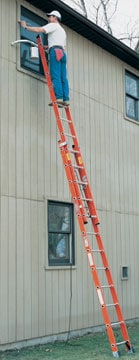
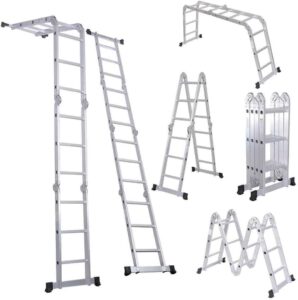
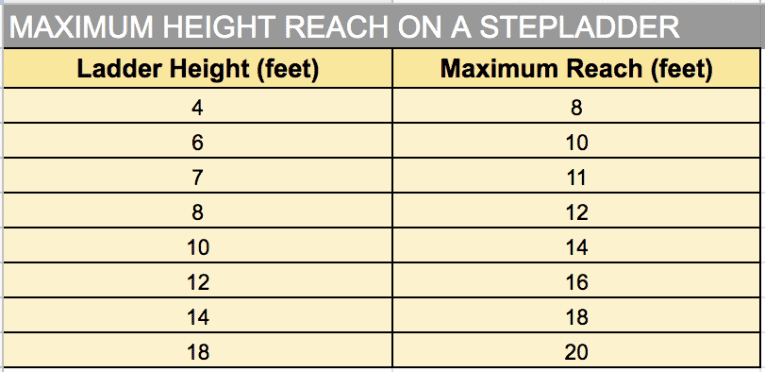
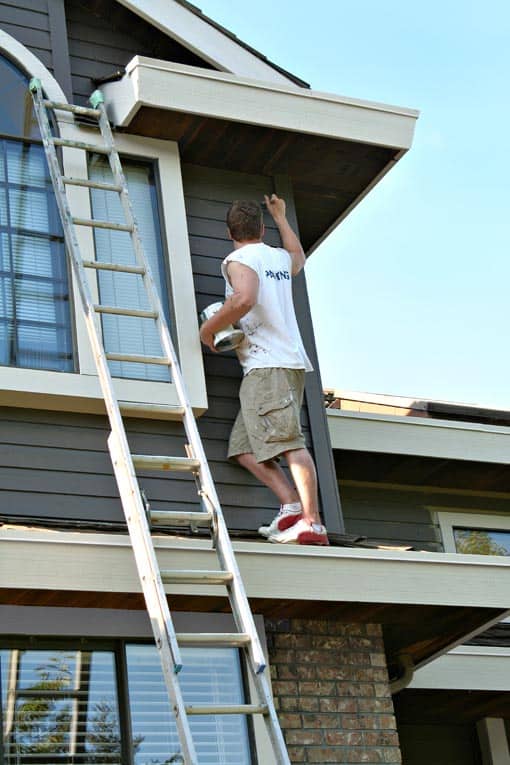





 Don Vandervort writes or edits every article at HomeTips. Don has:
Don Vandervort writes or edits every article at HomeTips. Don has:
